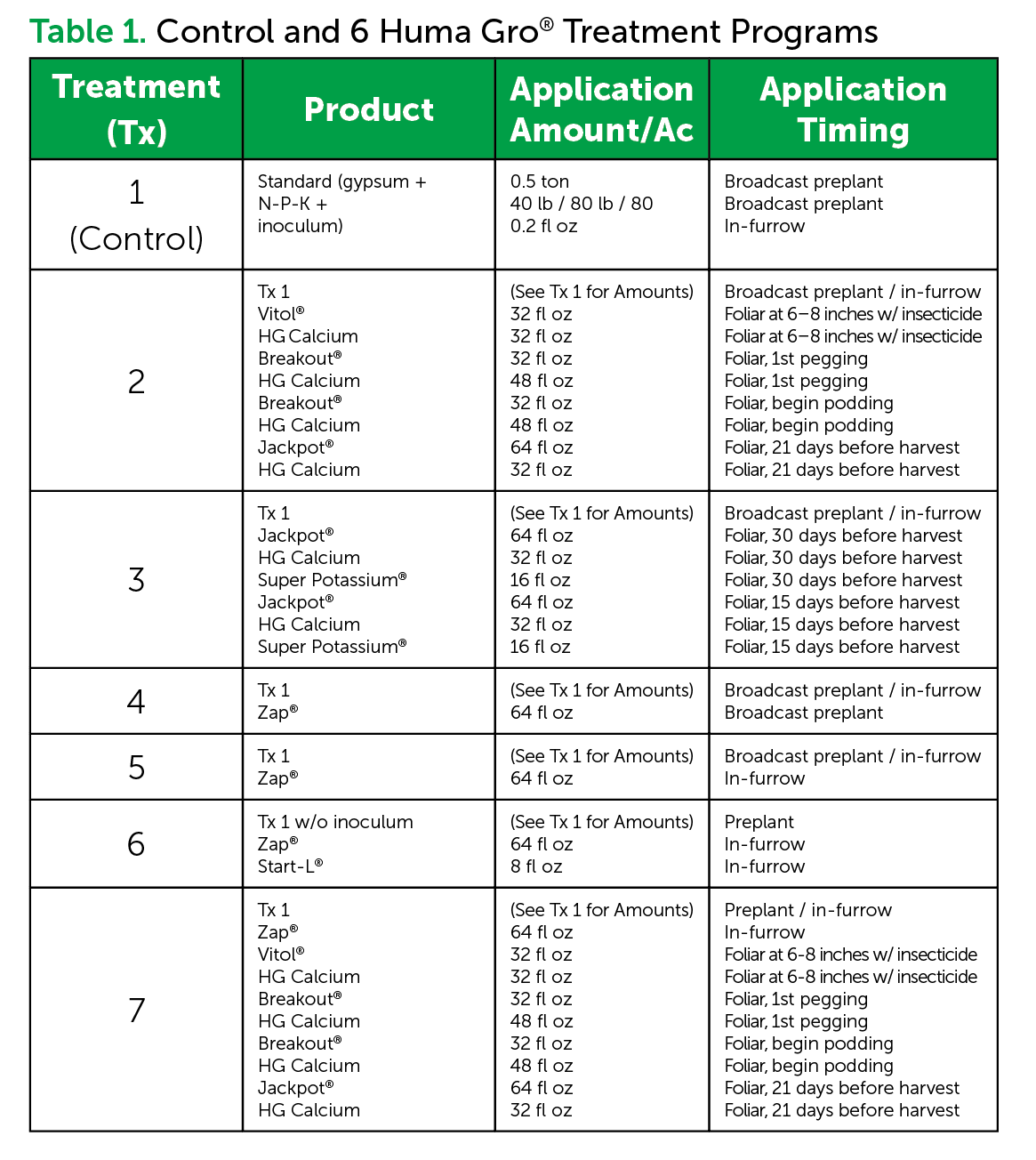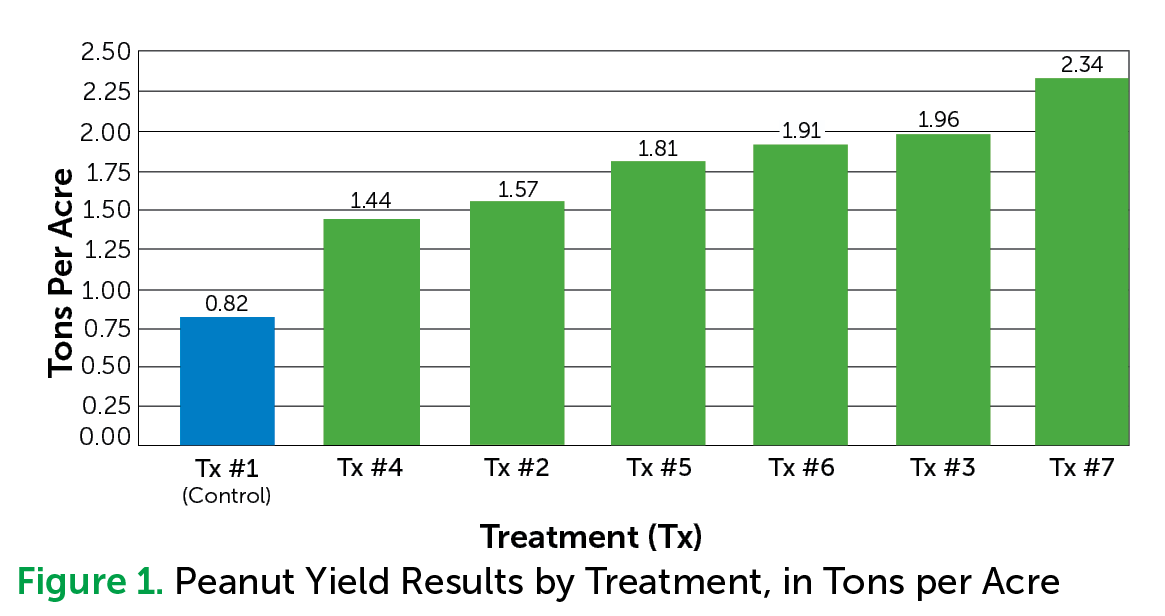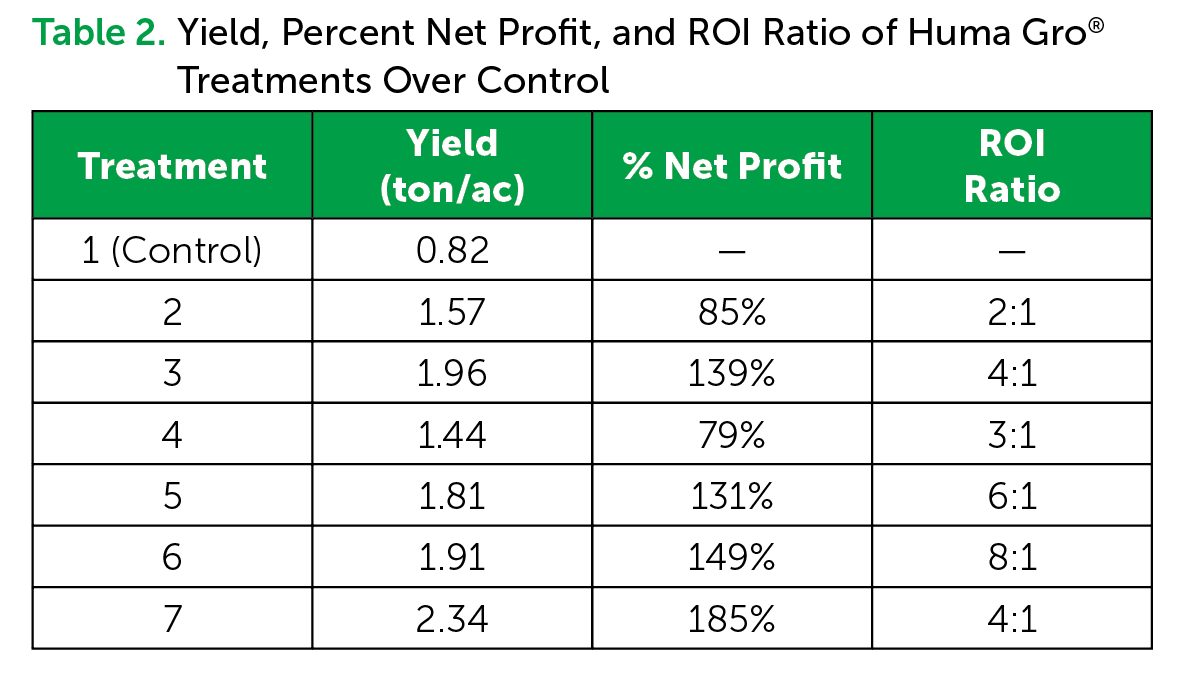Materials and Methods
This trial on peanut (Arachis hypogaea, Var. GA-12Y) was conducted in Memphis, Tenn. by AgriCenter International, as a randomized complete block study with 4 replications in 12.6’ x 30’ plots. The peanuts were planted on June 25 and harvested on December 14. Seven treatment programs were compared as shown in Table 1.
Results
All the Huma Gro® treatments yielded significantly higher than the grower standard (Control). Treatment 7 resulted in the highest yield (2.34 ton/acre) compared with the Control (0.82 ton/acre), with Treatment 3 next highest at 1.96 ton/ac. The average rainfall in Tennessee ranged from 20% to over 40% higher in 2019 than 2018. Generally, the average peanuts yield for the southern region is about 2 ton/acre. However, due to unfavorable weather conditions in the area the overall yield production was lower than normal for the Control treatment at 0.83 ton/acre. It is noteworthy that Treatment 7 (2.34 ton/acre) yielded 17% higher than the normal regional average peanut yield (2 ton/acre).
Based on a peanut market price of $440/ton, Table 2 shows yield and net profit, along with the return on investment (ROI) ratio, for the 6 treatments over the control. Treatment 7 showed the highest percentage of yield increase over the control (185%). An ROI ratio of 8:1 occurred for Treatment 6.
Conclusions
Micro Carbon Technology® in Huma Gro® soil and foliar products contributed to significant peanut yield and revenue increases in all the Huma Gro® treatments evaluated in this study. Though adding Huma Gro® products increased initial costs, the greater yields and net profits generated by the treatments resulted in a return on investment that paid for the cost and application of the Huma Gro® products many times over ($2–$8 dollars returned for every $1 spent).
Click here to view/download the complete report.
Related Posts

The Value of Humic Substances in the Carbon Lifecycle of Crops:
Humic Acids, Fulvic Acids, and Beyond. A New White Paper from Huma Gro® This white paper is based on an article by Huma Gro® staff originally published in the January 2017 issue of AgroPages Magazine. Humic substances play an important role in soil fertility and crop yield. This article provides a basic overview of what

Huma Gro Program Increases Sweet Potato Yields 39% with a 10:1 ROI
Conducted by: Dr. K. Bruce Kirksey, AgriCenter International, Memphis, Tennessee Huma Gro® Products: Jackpot®, Calcium, Super Potassium®, Zap® OBJECTIVE This field trial was conducted in order to compare sweet potato crop yields and return on investment (ROI) obtained when a Huma Gro® soil product (Zap®, for feeding soil biology and improving soil fertility) and 2

Huma Gro® Stories From the Field—SE United States, No.1
In this first installment of Huma Gro® Stories From the Field, we feature 16 short stories from Florida and Georgia of growers’ use of 12 different Huma Gro® products on a variety of crops. The stories describe everything from increased yields to reduced nematodes, to recovery from frost damage to reduced effects from citrus greening.




